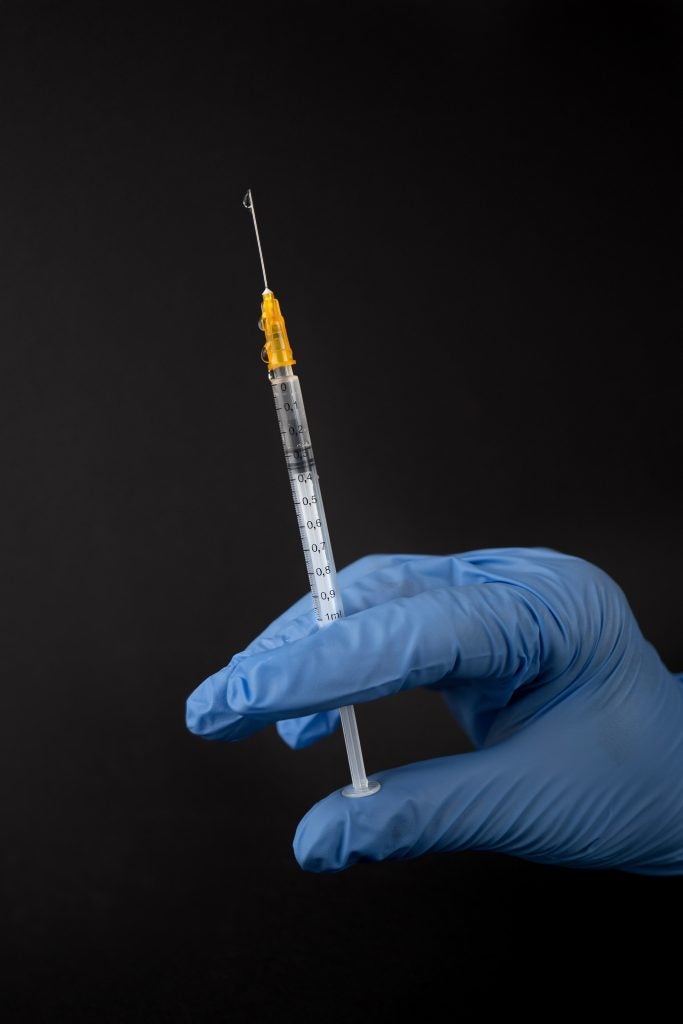
Table of Contents
What is Vaginismus?
Vaginismus is medically defined as involuntary spasms of the pubococcygeus (PC) muscles, the muscles which surround the vaginal canal. Vaginismus is a physical disorder that can stem from psychological or physiological factors. On average, one in every 500 women will experience vaginismus. However, the true number of females with vaginismus is estimated to be higher because many females never report their condition or seek medical care due to fear or lack of knowledge.1 Females with vaginismus report an increase in vaginal tightness prior to or during penetration. This may include an instance that is sexual, such as intercourse, or even non sexual, such as inserting a tampon or a speculum during a pelvic exam. This tightness can make penetration extremely painful, and in extreme cases, impossible. Although intercourse may become impossible, women who experience vaginismus are still capable of becoming sexually aroused, self-lubricating, and reaching clitoral orgasms.
There are two types of vaginismus: primary vaginismus and secondary vaginismus. Primary vaginismus refers to a condition in which a female has never been able to engage in intercourse without experiencing spastic muscle contractions. Secondary vaginismus is a condition which emerges later in life, after a period in which a female had been able to experience penetration without pain. Both condition are highly curable and have a very high treatment success rate. Treatment options are the same for both conditions; however, primary vaginismus often requires a slightly longer treatment period.2
Diagnosing Vaginismus
The diagnosis process for vaginismus can be lengthy and usually requires multiple visits to a physician before an official diagnosis is made. The first step in diagnosing vaginismus is scheduling a full pelvic exam with a gynecologist so he or she can identify any physical causes. If a female is experiencing any symptoms of vaginismus, a specific gynecological exam is conducted as follows:
- The physician first conducts a general vulvodynia exam by pressing a Q-tip against areas of the vulva and measuring the patient’s level of pain.
- The physician then places a finger inside the vaginal opening and slightly presses on the vaginal walls. For females with vaginismus, this pressure usually causes the walls of the vagina to spasm, and the female reports a certain level of pain.
- Physical factors that can cause vaginismus include, but are not limited to: urinary tract infections (UTIs) or other urinary problems, vulvodynia, vaginal atrophy, endometriosis, and sexually transmitted diseases (STIs).3
In most cases, vaginismus can be traced to anxieties associated with the act of penetration; they may be linked to causes such as past sexual trauma or control issues within a relationship. Because the psyche is innately connected to the body, residual anxiety or negative feelings toward a past sexual encounter may interfere with the sexual response cycle. Thus, biological concerns should be approached with a psychological (as well as physiological) perspective through counseling or any other suitable treatment. Common treatments for vaginismus include Kegel exercises, muscle-relaxation exercises utilizing a graded series of plastic dilators, pelvic-floor physical therapy, Botox injections with progressive dilation, and couples therapy. Attending couples therapy can allow partners to learn how to communicate better with one another, resolve specific problems, and strengthen their relationships. The female may be advised to engage in any or all of the techniques previously mentioned first by herself, and then to gradually incorporate her partner (if applicable).
Vaginismus Exercises: Kegels

Kegel exercises are commonly used for vaginismus therapy. In order to successfully do a Kegel exercise, it is important that all muscles are relaxed. This can be achieved by taking a warm bath before beginning. The steps to a successful Kegel are as follows:
- Locate the PC muscles by placing a finger in your vagina and tightening your pelvic floor muscles. If you feel pressure around your finger, you are successfully tightening your PC muscles! Intentionally stopping urine flow is also a method of locating the PC muscle.
- After you have successfully located the PC muscles, contract them for five seconds and then relax for five seconds. Repeat this process four to five times in a row.4
- Repeat these sets throughout the day. Three sets of Kegel exercises throughout the day are recommended for optimal results. Kegels can be done wherever and whenever, as they are discreet.
Vaginismus Exercises: Dilators
Using a set of graded vaginal dilators may also help a female steadily learn how to comfortably accommodate an object, finger, or penis. These devices are available in various diameters and lengths and are inserted in a way similar to tampons. Dilators can be purchased online or can also be provided by a physician or physical therapist. Again, it is important to be relaxed and comfortable prior to beginning a dilator session. The steps to a successful dilator session are as follows:
Place a generous amount of artificial lubricant (KY Jelly or Astroglide) on the smallest dilator available to begin. Find a comfortable position and try to relax the PC muscles that surround the vaginal canal. Slowly insert the dilator. Numbing lubricant can be used in the first sessions in order to achieve penetration if it is extremely painful or impossible
- Slightly apply pressure on the pelvic floor muscles with the dilator while relaxing all other muscles.
- The dilator is left in for a period of 10-15 minutes and the process is repeated every day until the female is able to insert the largest dilator without experiencing pain or muscle spasms.
By using progressively larger vaginal dilators, a female learns to keep her PC muscles relaxed during penetration. A female may then begin self-exploration, external genital stimulation, and eventually insert a finger into the vagina. These progressive steps allow the female to become more comfortable with her body and ultimately decrease anxiety and fears that may lead to vaginismus spasms.
Note that vaginal dilators are typically ineffective when used without medical guidance. They should not be used without proper physical instruction and technique. Dilators are simply one aspect of treatment that will only be effective with correct pelvic control techniques. The main focus of using a dilator properly is gaining pelvic control, not stretching the vaginal opening.
Vaginismus Exercises: Pelvic Floor Physical Therapy
Some females may have a difficult time using the dilator or Kegel exercise regimen and can become frustrated with their lack of progress. Pelvic-floor physical therapy can be a substitute for dilators. The exercises done in pelvic floor physical therapy are similar to dilator exercises but are performed by a professional. At-home exercises are still crucial with this therapy, but the female has more help in discovering what triggers her spasms and how to relax her muscles properly. Just like any other muscle of the body, proper training and exercise are crucial to rehabilitation. Once the female has completed the previous steps, she may want to incorporate her partner into these exercises. Together, they may follow the same regimen she practiced alone. Open and honest communication is a vital and crucial element to this progression.
Medical Treatment: Botox Injections with Progressive Dilation
Botox injections that are administered intravaginally have recently been used as a treatment for vaginismus. This treatment is usually reserved for patients with severe vaginismus who have not shown improvement with other treatments. Botox injections are typically administered by a plastic surgeon. The steps for Botox therapy are as follows:

- The areas of the vaginal muscle that experience the greatest amount of spasm are identified under sedation. Botox injections are administered to these areas.
- A long-lasting local anesthetic is also injected intravaginally.
- Progressive dilation is then performed while the patient is still sedated. Vaginal dilators similar to those used in at-home treatments are coated with a topical anesthetic. The dilators are inserted progressively until the largest dilator is accommodated.
- The patient is then taken to recovery while the largest dilator is still in place, and she begins supervised dilation for two to three days. The physician or nursing staff instructs the patient on how to properly use dilators until the patient is able to dilate to the largest dilator without pain. The patient usually leaves the hospital with a medium-sized dilator in place that is later removed.5
- This treatment is usually coupled with sex therapy and counseling and continued use of dilators is recommended.6
Fortunately, research shows that females who are treated by a professional can expect an 80-100% improvement rate. It is imperative to seek medical help in order to properly treat vaginismus. Many females suffer unnecessarily from this disorder because they are ashamed or embarrassed to seek health care. No one should ever be ashamed of taking control of their health and sex life.
References
- “How Common is Vaginismus?” When Sex Hurts – Vaginismus. The Society of Obstetricians and Gynecologists of Canada, 2014. Web.
- “Differences in Treatment.” Vaginismus Treatment. Women’s Health Rehab & Supply, 2016. Web.
- “Examples of Physical Causes.” What Causes Vaginismus? Women’s Health Rehab & Supply, 2016. Web.
- “How to do Kegel exercises.” Mayoclinic. Mayo Foundation for Medical Education and Research, 2016. Web.
- “Vaginismus Treatment using Botox.” Vaginismus MD. Peter T. Pacik, MD; 2016. Web.
- “Botox Injection for Treatment of Vaginismus.” ClinicalTrials.gov. U.S. National Institute of Health, 10 Dec 2012. Web.
Last Updated: 23 February 2016.
